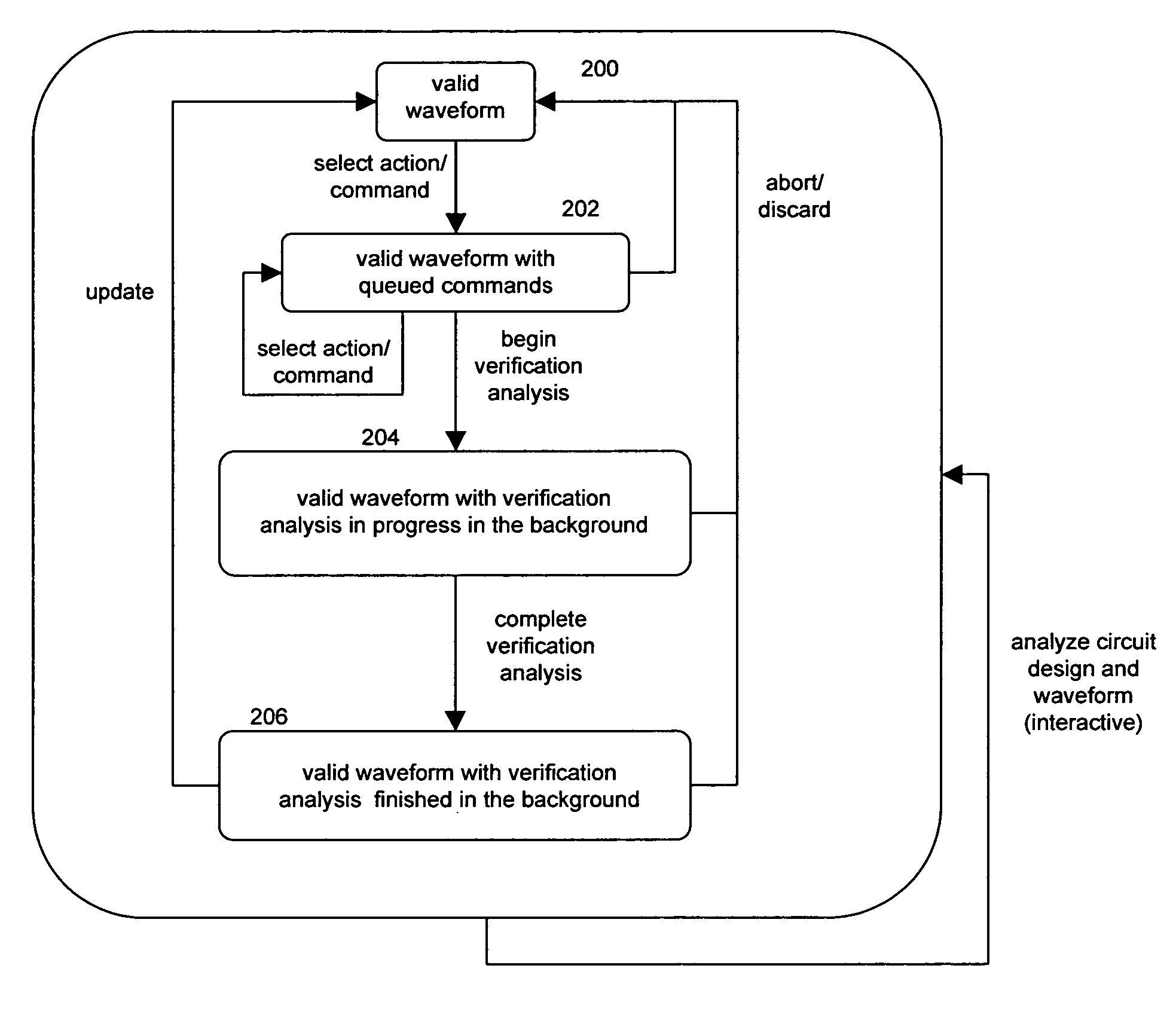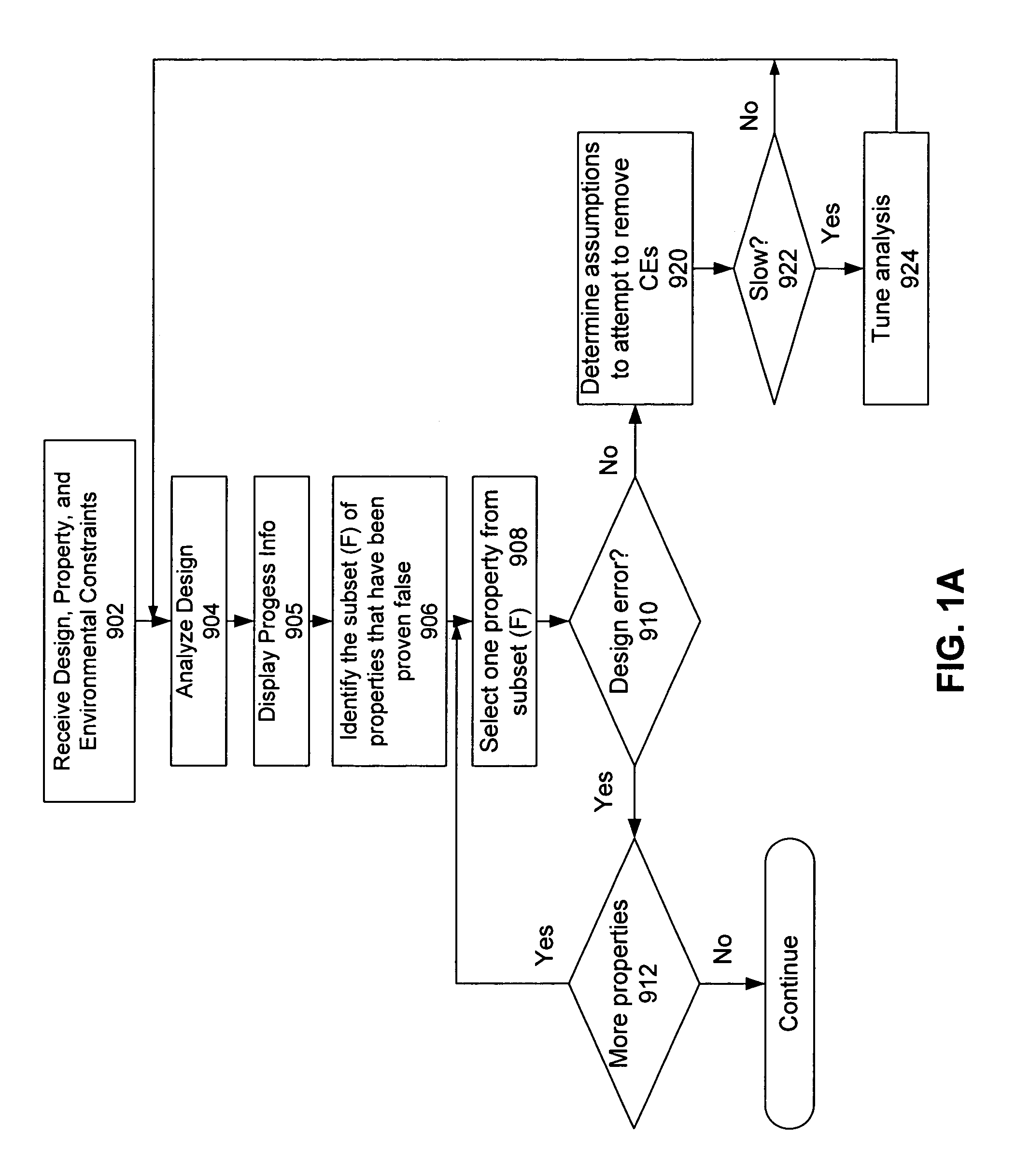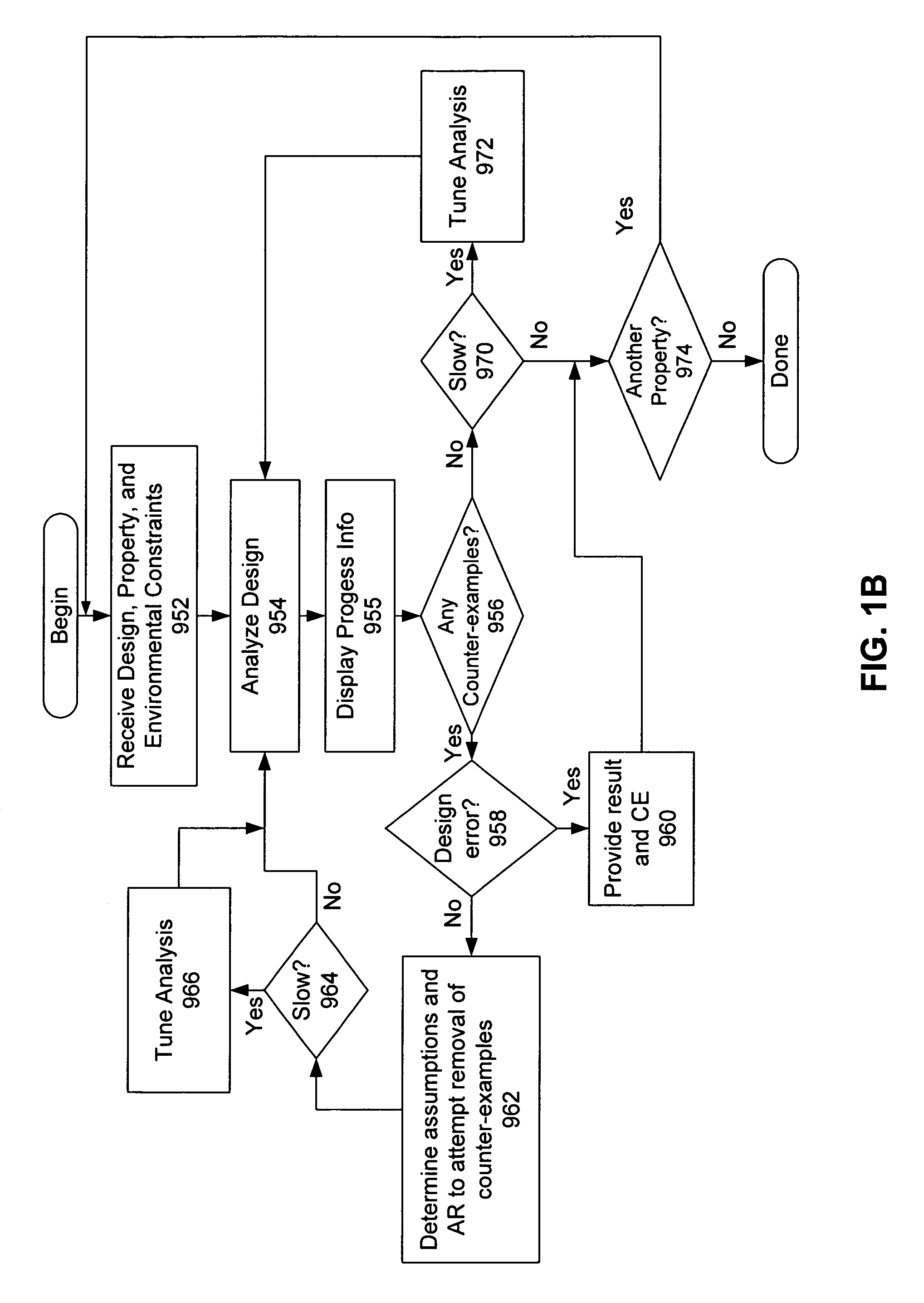Interactive analysis and debugging of a circuit design during functional verification of the circuit design
a circuit design and functional verification technology, applied in the field of formal verification systems, can solve the problems of increasing complexity, consuming approximately 70-80% of the total time and resources, and increasing complexity of integrated circuits, so as to improve the practicality of formal verification and increase interactivity
- Summary
- Abstract
- Description
- Claims
- Application Information
AI Technical Summary
Benefits of technology
Problems solved by technology
Method used
Image
Examples
Embodiment Construction
Overview
[0022]General approaches for resolving inconsistencies are illustrated in the flow charts of FIGS. 1A and 1B. The flow chart shown in FIG. 1A guides users to remove false negatives by providing feedback on the cost and effects of possible assumptions that are provided by the user or generated by the tool. FIG. 1B illustrates a similar process for guiding a user to remove false negatives, but the embodiment illustrated in FIG. 1B includes steps for dealing with methodologies that use the concept of an analysis region (AR).
[0023]With reference to FIG. 1A, a verification software suite (e.g., a “tool”) receives 902 a circuit design, a set of properties or requirements, and a set of environmental constraints for the functional verification process. The tool then analyzes 904 the circuit design to perform verification thereon. In one embodiment, this analysis includes a formal verification process as set forth in U.S. application Ser. No. 10 / 745,993, filed Dec. 24, 2003, which is...
PUM
 Login to View More
Login to View More Abstract
Description
Claims
Application Information
 Login to View More
Login to View More - R&D
- Intellectual Property
- Life Sciences
- Materials
- Tech Scout
- Unparalleled Data Quality
- Higher Quality Content
- 60% Fewer Hallucinations
Browse by: Latest US Patents, China's latest patents, Technical Efficacy Thesaurus, Application Domain, Technology Topic, Popular Technical Reports.
© 2025 PatSnap. All rights reserved.Legal|Privacy policy|Modern Slavery Act Transparency Statement|Sitemap|About US| Contact US: help@patsnap.com



